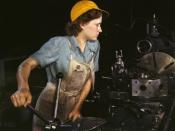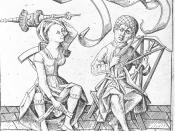The part that the toy store industry plays in creating gender. References to Susan Willis' essay "Gender as Commodity"
Toy Store Practicum
Susan Willis, in her essay "Gender as Commodity," states, "Our culture is mass culture, where one of the strongest early influences on gender is the mass toy market.... In today's toy market there is a much greater sexual division of toys defined by very particular gender traits than I'd say has ever existed before... Walk into any toy store and you will see, recapitulated in the store's aisle arrangement, the strict distinction and separation of the sexes along specific gender lines: Barbies, My Little Ponies, and She-Ras in one aisle; He-Man, the Transformers, and Thundercats in another"
The toy department in Target unmistakably displays the differences in the roles of little girls and little boys. The simple fact that a person knows what toy is meant for a girl and what toy is for a boy shows the affect of "gender roles" in our society.
We were unknowingly raised with these unwritten rules. "When gender is assimilated to the commodity, it is conceived as something fixed and frozen: a number of sexually defined attributes that denote either masculinity or femininity on the supermarket shelf of gender possibilities." The toy section of the store is a perfect model of Susan Willis' "supermarket" of gender possibilities. It is generally a gendered space, aisles for boys and aisles for girls with a few exceptions.
Attempts of neutrality for the toy industry can be found in the baby and toddler toys aisle. The majority of the toys were not obviously for a boy or girl. These playthings focused on developing basic motor skills. Either sex could play with these objects without guilt. At this point in your life though, you...


